Koji Yamada
About the department
In Oral and Maxillofacial Surgery, we extract wisdom teeth buried in the jawbone and teeth of medically compromised patients (diabetes, hypertension, heart disease, or those taking special drugs). We also diagnose and treat temporomandibular joint disorder, oral mucosal disease, infection of the gums or jawbone, oral psychosomatic disease (glossodynia), and neurological disease (trigeminal neuralgia). We perform surgery under general anesthesia for jaw deformity, tumors of the oral cavity or jawbone, and trauma, etc.
- Facility certified by academic societies
- Registered training institute for specialization, the Japanese Society of Oral and Maxillofacial Surgeons
- Certified training facility for specialists of the Japanese Society for Temporomandibular Joint
- Certified training facility of the Japanese Society of Oral Oncology
- Certified training facility of the Japan Association of Oral Rehabilitation
- Certified training facility of the Japanese Board of Cancer Therapy
Common oral diseases treated
- Oral surgery for medically compromised patients
- Jaw deformity
- Extraction of impacted teeth
- Oral tumors (benign tumors, malignant tumors)
- Temporomandibular joint disorder
Director of the department
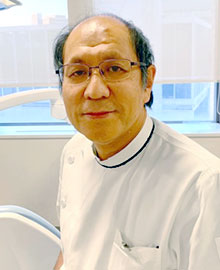
Specialty/qualification
- Specialist and senior specialist, the Japanese Society of Oral and Maxillofacial Surgeons
- Board certified specialist and instructor of the Japanese Society for Temporomandibular Joint
Masahiro Watanabe
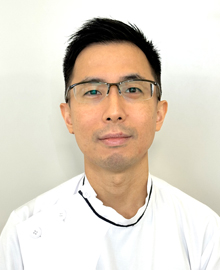
Specialty/qualification
- Specialist and senior specialist, the Japanese Society of Oral and Maxillofacial Surgeons
- Board certified dentist of the Japanese Stomatological Society
- Board certified specialist and instructor of the Japanese Society for Temporomandibular Joint
- General clinical oncologist for dental surgery (by JBCT)
(JBCT: Japanese Board of Cancer Therapy)
Chief Dental Clinician
Hiroaki Yoshida
Specialty/qualification
- Board certified dentist and instructor of the Japanese Stomatological Society
- Board certified specialist and instructor of the Japanese Society for Temporomandibular Joint
- Specialist and senior specialist, the Japanese Society of Oral and Maxillofacial Surgeons
- Certified industrial dentist
Chief Dental Clinician
Ryosuke Kubota
Specialty/qualification
- Specialist, the Japanese Society of Oral and Maxillofacial Surgeons
- Certified industrial dentist
Characteristics of dental care
1. Oral surgery for medically compromised patients
1) Drug-induced osteonecrosis of the jaw
Patients taking drugs for osteoporosis and rheumatism or patients receiving treatment for bone metastasis of cancer may have necrosis of the jawbone due to drugs when oral surgery such as tooth extraction is performed. This is called drug-induced osteonecrosis of the jaw. In our department, we check the types of drugs used and provide treatment to prevent drug-induced osteonecrosis of the jaw. We also provide specialized treatment for patients who develop drug-induced osteonecrosis of the jaw.
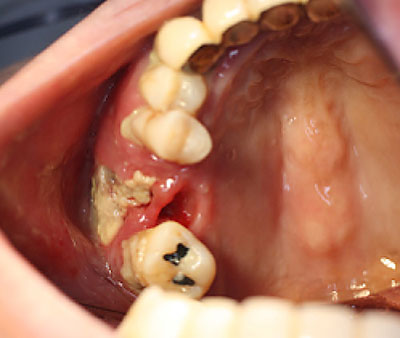
Osteonecrosis of the jaw occurring after tooth extraction
2) Oral surgery for patients with cerebrovascular or cardiovascular disease
Patients with cerebrovascular or cardiovascular disease often take drugs to make blood flow smoothly, which may make postoperative hemostasis difficult. In our hospital, we provide appropriate and safe treatment in cooperation with the patient’s primary care physician after understanding the types of prescribed drugs and general condition. At the time of treatment, we provide safe and secure treatment using a vital sign monitor.
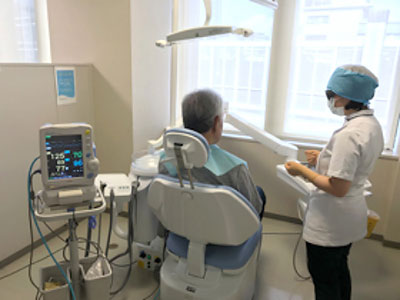
Procedure under monitoring by a vital sign monitor
2. Jaw deformity
Jaw deformity is a disease with abnormal occlusion or facial deformation due to excessive growth of the maxilla or mandible toward the front or conversely a small jaw. People with jaw deformity may not bite properly or speak clearly. Sleep apnea is also known to be caused by a small jaw. In addition, quite a few patients suffer from psychological problems due to jaw deformity. Currently, it can be better treated by the combination of orthodontic treatment and jaw surgery. We perform surgery when the growth and development of the jaw is completed (after the age of 17 to 20). The health insurance covers the treatment of jaw deformity, including orthodontic treatment and surgery of the jaw and hospitalization for the surgery. We proceed with treatment by a team of Oral and Maxillofacial Surgery and Orthodontics. The patients prepare for making good teeth alignment (preoperative orthodontic treatment) for 1 to 2 years before surgery. Surgery is performed under general anesthesia, and all procedures are performed from the mouth. After surgery, orthodontic treatment is continued, and fine adjustment (postoperative orthodontic treatment) is performed to stabilize occlusion.
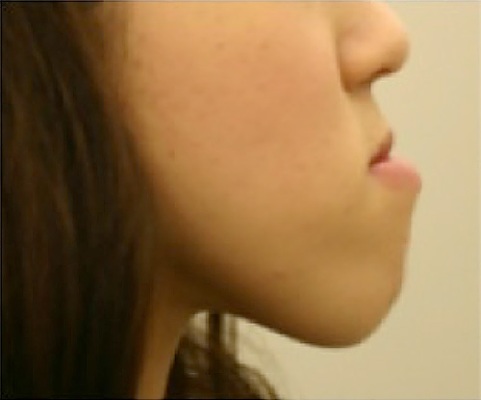
Preoperative facial appearance
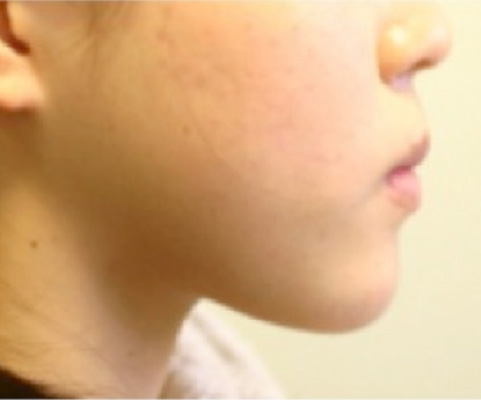
Postoperative facial appearance
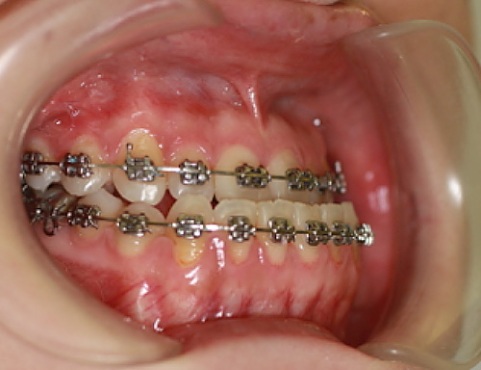
Preoperative occlusion
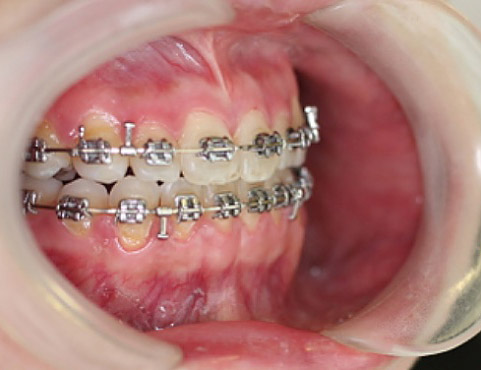
Postoperative occlusion
3. Extraction of impacted teeth
Impacted teeth are buried in the gums or bones due to insufficient space and malpositioning of a tooth germ (egg of tooth). They are often occurred to the third molar and canine tooth. In particular, the third molar called wisdom tooth often does not grow straight, and some or all of the tooth are impacted in the gingiva or bone. Since this impacted wisdom tooth often causes trouble such as swelling of the gingiva and dental caries in the contact point with the second molar due to insufficient brushing, tooth extraction is recommended. However, the nerves and blood vessels pass in the middle of the mandible to the lower lip, and extraction of an impacted wisdom tooth requires specialized knowledge and consideration. In our hospital, if the proximity of the mandibular canal is found on X-ray images, the positional relationship with the root apex will be closely examined using dental CT, etc. Tooth extraction is performed under local anesthesia in most cases, but general anesthesia is also used in the case of large invasion. Pain in the affected area and swelling of the face reach peak in 2 to 3 days from the day of tooth extraction. However, they mostly improve in about 1 week.
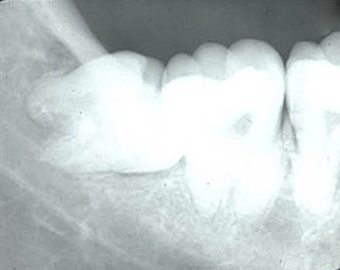
Horizontal impacted tooth of right lower wisdom tooth. The nerves to the lower lip (inferior alveolar nerve) pass through the tip of the root.
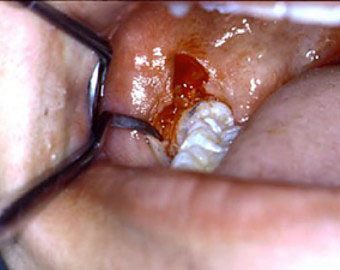
Incising the gingiva and extracting an impacted wisdom tooth
4. Oral tumor
Oral tumors are largely classified into benign and malignant tumors. Benign tumors include odontogenic tumors mainly in the jawbone and non-odontogenic tumors in the soft tissue. Typical odontogenic tumors include ameloblastoma and odontoma. Non-odontogenic tumors include warty papillomas and fibroids resembling polyps and hemangiomas. Oral cancer, a malignant tumor, is classified by the site of onset and is represented by tongue cancer and gingival cancer. In our hospital, regarding treatment for benign tumors, we select the conservative treatment with preservation of the jawbone as much as possible for odontogenic tumors and apply laser or cryosurgery for soft tissue tumors to preserve function and morphology. Treatment methods for oral cancer include mainly surgical therapy as well as radiotherapy and chemotherapy. In our hospital, we select the best treatment method by combining these treatments based on the type of cancer, malignancy, degree of progression (stage), etc.
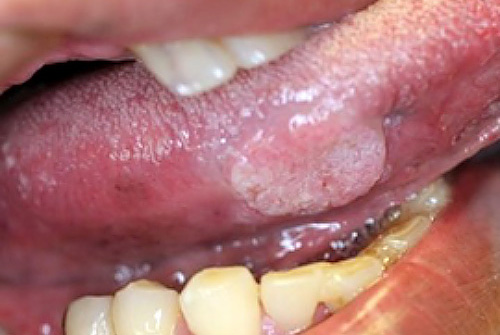
Right tongue cancer
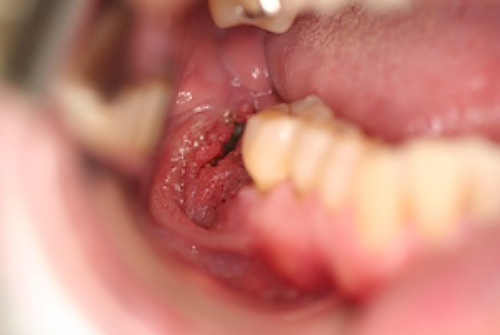
Lower right gingival cancer
5. Temporomandibular joint disorder
The number of patients who visit medical institutions complaining some kind of symptoms of temporomandibular joint disorder is increasing year by year. The three typical symptoms of temporomandibular joint disorder are "pain in the jaw," "unable to open the mouth," and "clicking sound when moving the jaw." These symptoms often interfere with daily activities due to the difficulty in eating or speaking.
In our department, after differentiating from other diseases with symptoms similar to those of temporomandibular joint disorder, we make a diagnosis comprehensively based on sufficient interview with patients, examine the jaw joint movement, conduct X-ray examination, MRI examination, etc., and select an appropriate treatment for each patient. Treatment includes daily life guidance including dietary guidance, drug therapy, physiotherapy (massage and stretching of muscle, low-frequency electrical stimulation therapy, open-mouth training, etc.), and appliance therapy (treatment with a mouthpiece). Surgical therapy (e.g. pumping manipulation therapy and temporomandibular joint irrigation therapy) is also available for more refractory cases.
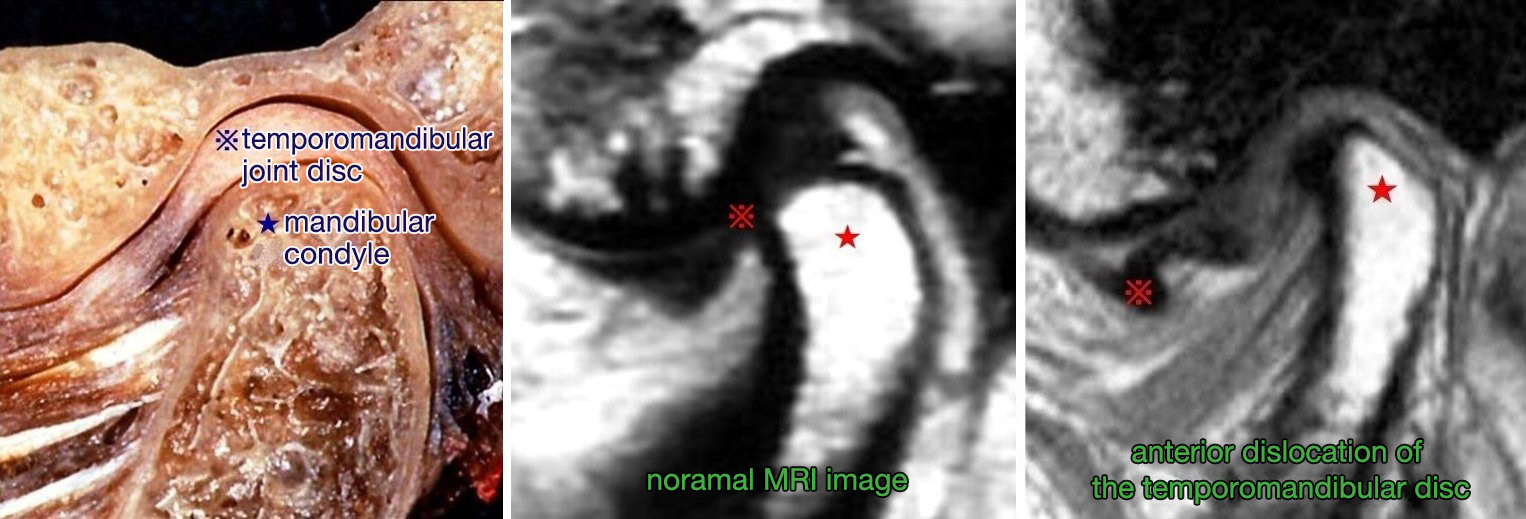
MRI for temporomandibular joint disorder
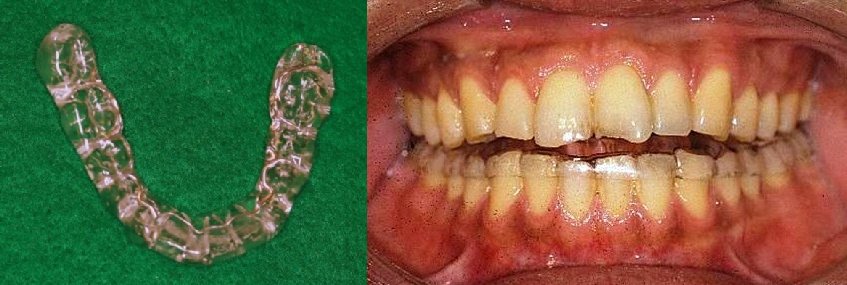
Appliance therapy
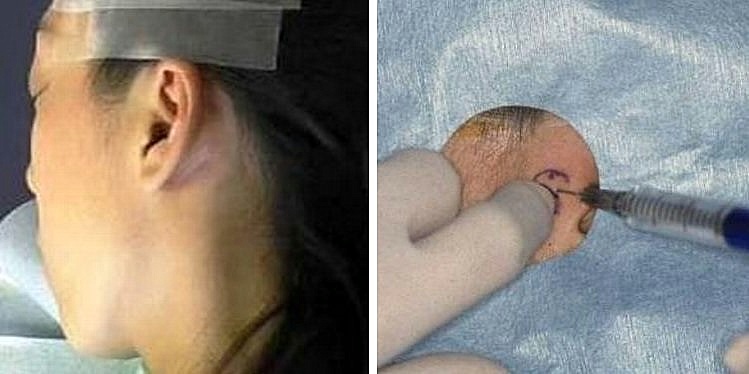
Pumping manipulation therapy